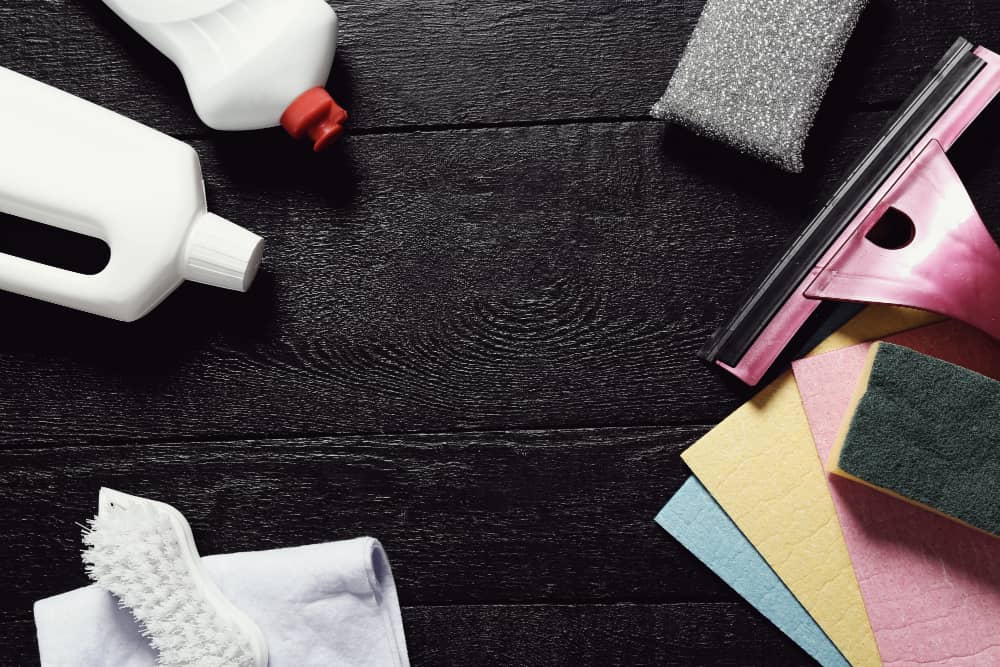Car carpets are often exposed to dirt, dust, and stains. Regular cleaning and maintenance are necessary to keep your car interior looking clean and fresh. However, cleaning car carpets can be a challenging task, especially if you don’t know the proper techniques and products to use. In this article, we will share some tips and tricks on how to clean car carpets effectively to keep them in good condition and enhance the overall appearance of your car’s interior.
1. Preparing for the Cleaning Process

Before you start cleaning your car carpet, it’s important to prepare the necessary tools and materials. First, remove any items or debris from the carpeted area of your car, including mats, toys, and trash. This will allow you to thoroughly clean the carpet without any obstacles. Next, vacuum the carpet to remove any loose dirt, dust, or debris. Use a crevice tool to reach tight spaces and corners that the regular vacuum attachment can’t reach.
After vacuuming, it’s time to pre-treat any stains on the carpet. There are various types of stain removers available in the market, but make sure to choose the one that is specifically formulated for your car carpet material. Before applying the stain remover, test it on a small, inconspicuous area of the carpet to make sure it won’t cause any damage or discoloration. Follow the instructions on the label, and use a soft-bristled brush to gently rub the stain remover into the carpet fibers.
Another important step in preparing for the cleaning process is to check the weather forecast. You don’t want to clean your car carpet on a rainy day or in high humidity, as it will take longer to dry and may even develop a musty smell. Choose a sunny and warm day with low humidity to ensure that your carpet dries quickly and thoroughly. Additionally, if you’re using a steam cleaner, make sure to fill the water tank with hot water to ensure that it reaches the right temperature for effective cleaning. By taking these preparation steps, you’ll be able to clean your car carpet more efficiently and achieve better results.
2. Removing Loose Dirt and Debris
The first step to cleaning your car’s carpet is to remove any loose dirt, debris, or dust that may have accumulated on the surface. This can be done by using a handheld vacuum cleaner or a stiff bristle brush. If you are using a vacuum cleaner, make sure to use the attachment that is designed for cleaning carpets and upholstery. This will help to suck up the dirt and debris that has settled deep within the carpet fibers.
If you don’t have a vacuum cleaner, you can also use a stiff bristle brush to loosen the dirt and debris from the carpet. Make sure to brush in the direction of the carpet fibers to avoid damaging them. You can also use a can of compressed air to blow out any loose dirt or debris that may be stuck in the crevices of the carpet.
It is important to remove as much loose dirt and debris as possible before moving on to the next step. This will make the cleaning process more effective and prevent the dirt from getting ground into the carpet fibers. By removing the loose dirt and debris, you will also be able to identify any stubborn stains or spots that may require special attention during the cleaning process.
Read More : Best Microfiber Cloth For Car
3. Vacuuming the Carpet

You can use a handheld or regular vacuum cleaner for this task. Before you start vacuuming, remove any large items, such as trash or toys, from the carpet.
Next, use the vacuum to suction up any loose dirt or debris on the surface of the carpet. Make sure to use the appropriate attachment for the vacuum cleaner to ensure you get the best results. For example, a crevice tool can help you reach tight spaces, while a brush attachment can be useful for more stubborn dirt and debris.
Move the vacuum cleaner back and forth across the carpet in a grid pattern, starting at one corner of the carpet and working your way across to the opposite corner. Don’t forget to vacuum under the seats and floor mats, as dirt and debris tend to accumulate in these areas as well.
If there are any stubborn stains or spots that won’t come off with vacuuming alone, you can use a spot cleaner or carpet shampooer to remove them. However, make sure to test the product on an inconspicuous area of the carpet first to ensure it won’t damage the material.
4. Treating Stains and Spots
Treating stains and spots on your car’s carpet is essential to keep it looking clean and fresh. The longer you let the stains and spots sit, the more difficult they become to remove. There are several commercial cleaners available that you can use to treat stains and spots on your car’s carpet. However, you can also use simple household items to remove the stains effectively.
One common household item you can use is white vinegar. Mix equal parts of white vinegar and water in a spray bottle and apply it to the stain. Let the solution sit for a few minutes and then blot it up with a clean microfiber cloth. Repeat the process until the stain is completely removed.
Another effective household item you can use is baking soda. Mix a small amount of baking soda with water to create a paste, then apply the paste to the stain. Let it sit for a few minutes and then blot it up with a clean microfiber cloth. Repeat the process until the stain is gone.
For tougher stains, you may need to use a commercial carpet cleaner. Follow the instructions on the cleaner carefully, and make sure to test it on a small, inconspicuous area of the carpet before applying it to the stain. This will help ensure that the cleaner doesn’t damage or discolor the carpet.
In addition to treating stains and spots as they occur, it’s a good idea to regularly clean your car’s carpet to prevent stains and odors from building up over time. Regular vacuuming, using a carpet cleaner, and spot treating as needed can help keep your car’s carpet looking and smelling fresh.
5. Shampooing the Carpet
Shampooing the carpet is an important step in deep cleaning your car’s carpet. This process helps to remove stubborn dirt, stains, and odors that may have accumulated in the carpet over time. Shampooing the carpet requires some specific tools and products, such as a carpet shampoo, a scrub brush, and a wet/dry vacuum.
Before starting the shampooing process, it is important to first vacuum the carpet thoroughly to remove any loose dirt or debris. Then, you can apply the carpet shampoo to the carpet using a sponge or scrub brush. Make sure to follow the manufacturer’s instructions for diluting and applying the shampoo.
Once the shampoo has been applied, use the scrub brush to work it into the carpet fibers. Focus on any areas that have heavy stains or dirt buildup. Allow the shampoo to sit on the carpet for the recommended amount of time, typically 10-15 minutes.
After the shampoo has had time to work, use a wet/dry vacuum to extract the shampoo and water from the carpet. Make sure to go over the carpet several times to ensure that all of the shampoo and water has been removed. Leaving any shampoo or water in the carpet can lead to mildew or mold growth, which can be harmful to your health and also create a foul odor in your car.
Once the carpet has been thoroughly cleaned and shampooed, allow it to dry completely before putting back any car mats or other accessories. You can use a fan or open the car windows to help speed up the drying process. With regular shampooing, your car’s carpet will look and smell fresh and clean for a long time.
6. Drying the Carpet
Drying the carpet after shampooing is an important step to prevent mold and mildew growth. The best way to dry a car carpet is to use a wet/dry vacuum cleaner. Start by using the vacuum cleaner to remove as much water as possible. Then, use a dry towel to soak up any remaining moisture.
If it’s a sunny day, you can also open the car windows and doors to let fresh air in and help the carpet dry faster. Make sure to leave the car in a well-ventilated area until the carpet is completely dry. This may take a few hours to a day or two, depending on the weather conditions.
Avoid using a heater or a hair dryer to dry the car carpet, as this may cause the fibers to shrink or melt. Additionally, avoid driving the car until the carpet is completely dry to prevent any moisture from seeping into the car seats or floor mats.
In conclusion, drying the car carpet is an important step to keep it clean and prevent any mold or mildew growth. By following the above tips, you can ensure that your car carpet is properly dried and ready to use again.
7. Applying a Carpet Protector
After shampooing and drying your car carpet, the next step is to apply a carpet protector. A carpet protector is a chemical solution that creates a barrier on the surface of the carpet, protecting it from dirt, stains, and spills. It works by repelling liquids and preventing them from seeping into the carpet fibers.
To apply a carpet protector, you will need to purchase a product designed for car carpets. These products are usually available at auto supply stores or online retailers. Be sure to follow the instructions carefully, as the application process can vary depending on the product.
Before applying the carpet protector, make sure the carpet is clean and completely dry. You should also test the product on a small, inconspicuous area of the carpet to ensure that it does not cause any discoloration or damage.
Once you are ready to apply the carpet protector, spray it evenly over the surface of the carpet, making sure to cover all areas. Be sure to follow the recommended drying time before using your car, as the product may need time to fully set.
By applying a carpet protector, you can help keep your car carpet looking clean and new for longer. It is especially useful for those who frequently transport pets, children, or food and drinks in their vehicles.
Read More : This is How to Clean Car Seats at Home Easily
8. Regular Maintenance Tips
To keep your car’s carpet looking clean and fresh, it’s important to perform regular maintenance. Here are some tips to help you maintain your car’s carpet:
- Vacuum regularly: Regular vacuuming can help remove loose dirt and debris before it becomes embedded in the carpet fibers. Aim to vacuum your car’s carpet at least once a week or more often if you have pets or frequently transport dirty items.
- Use floor mats: Investing in a good set of floor mats can help protect your car’s carpet from spills and stains. Be sure to choose mats that fit your car’s specific make and model to ensure the best coverage.
- Clean up spills immediately: If you spill something on your car’s carpet, it’s important to clean it up as soon as possible. Use a clean microfiber cloth to blot up the spill, then use a mild detergent and water to clean the affected area.
- Avoid eating and drinking in the car: Eating and drinking in the car can increase the likelihood of spills and stains on the carpet. If you must eat or drink in the car, be sure to use a spill-proof container and clean up any spills immediately.
- Consider professional cleaning: While regular maintenance can help keep your car’s carpet clean, it’s still a good idea to have it professionally cleaned on occasion. A professional cleaning can help remove embedded dirt and stains and leave your carpet looking and smelling like new. Aim to have your car’s carpet professionally cleaned at least once a year, or more often if you frequently transport dirty items.





